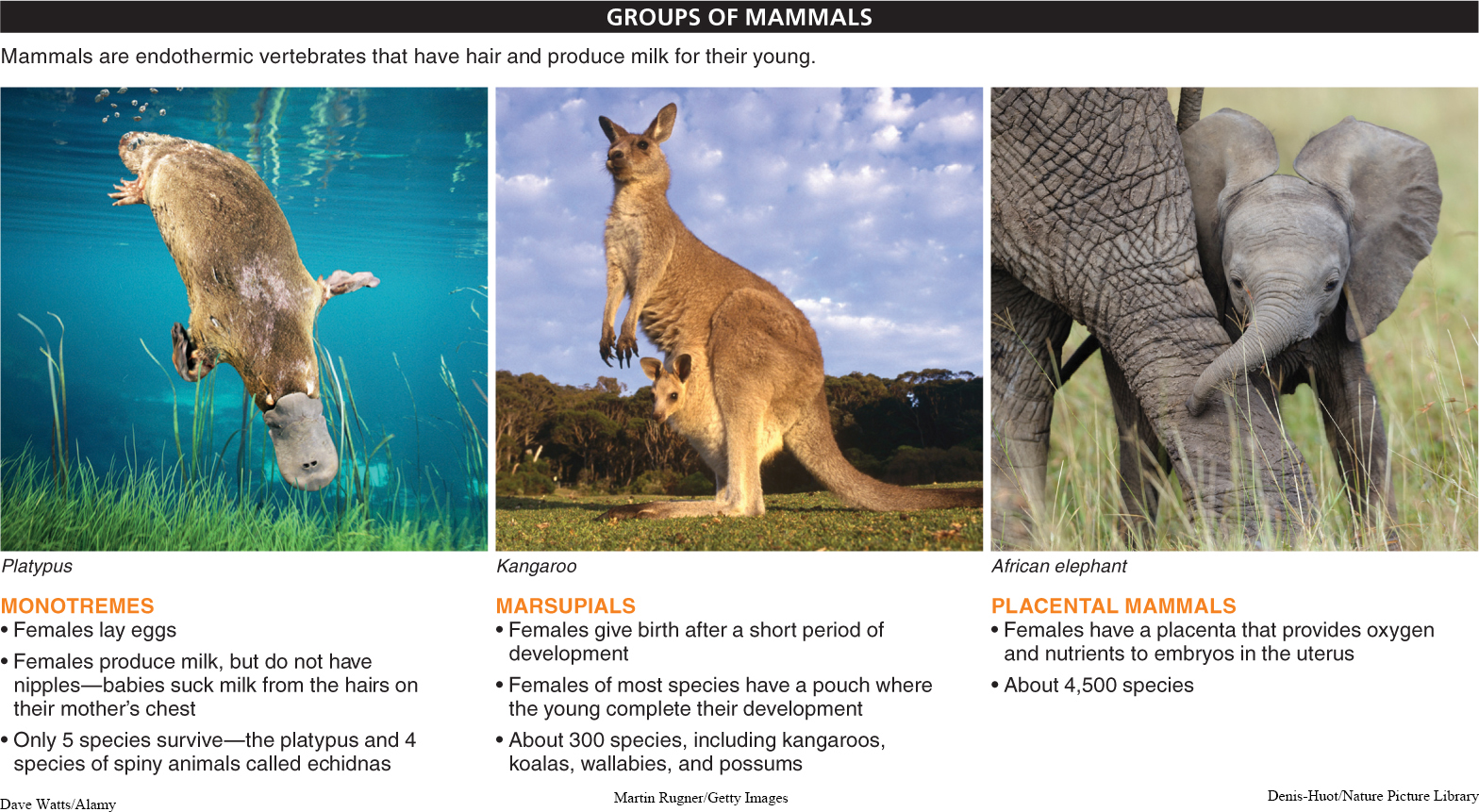As we saw in the previous section, two different evolutionary lineages began to diverge after amniotic vertebrates appeared. One gave rise to the reptiles, and the other gave rise to the mammals. Originally small, nocturnal insect-
As the earliest mammals evolved, there was a gradual transition from bodies with short legs that projected out horizontally from the trunk, like the legs of an alligator, to bodies with long legs held vertically beneath the trunk, like those of a dog (FIGURE 11-30). These anatomical changes would have allowed the earliest mammals to run faster and farther to capture prey. But an increase in muscle activity for running had to be accompanied by an increase in the rate of cellular respiration to provide the energy to keep the leg muscles working. With this increase in metabolism, along with the evolution of hair, the early mammals could trap the heat produced and use it for temperature regulation, setting the stage for endothermy (but through a different sequence of events than in the birds).

480
One feature common to most mammals is viviparity, or giving birth to babies (“live birth”) rather than laying eggs, but it is not a defining mammalian characteristic—
Today, only five species of monotremes survive: the platypus and four species of spiny animals called echidnas. The platypus lives in streams and rivers in eastern Australia. It uses its broad, leathery, electrosensitive bill to probe under rocks and sunken logs for prey such as aquatic insect larvae and crayfish, which it finds by sensing the electrical activity of their muscles as they try to hide. The echidnas—
The remaining two lineages of mammals, the marsupials and the placentals, are viviparous, but the newborn young of marsupials and placentals are quite different (FIGURE 11-31). Marsupials are called the “pouched mammals” because the female of most marsupial species has a pouch on her abdomen in which the young complete their development, following a short period of embryonic life in the uterus.

Placental mammals (including humans) take their name from the placenta, which is the structure responsible for the transfer of nutrients, respiratory gases, and metabolic waste products between the mother and the developing fetus. Dense capillary beds in the placenta send finger-
TAKE-HOME MESSAGE 11.18
Hair and mammary glands are defining characteristics of mammals. Monotremes are egg-
“All mammals have hair, nurse their young with milk, and give birth to live young rather than laying eggs.” Is this statement true or false?
False. Mammals are defined by the presence of hair, which serves as an insulator, and mammary glands, which serve to nourish the young. However, one group of mammals, called the monotremes, lays eggs. The other two groups of mammals, placentals and marsupials, give birth to live young.
481